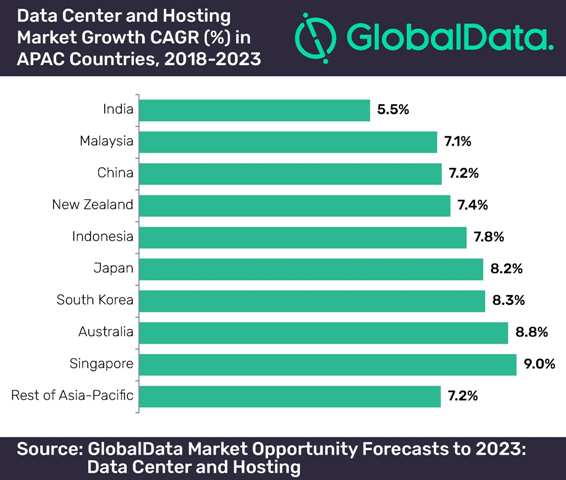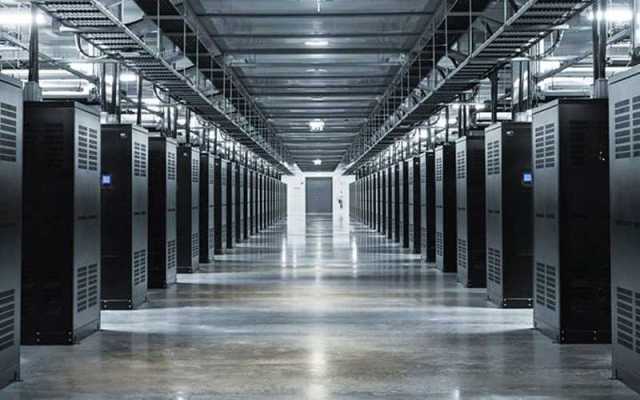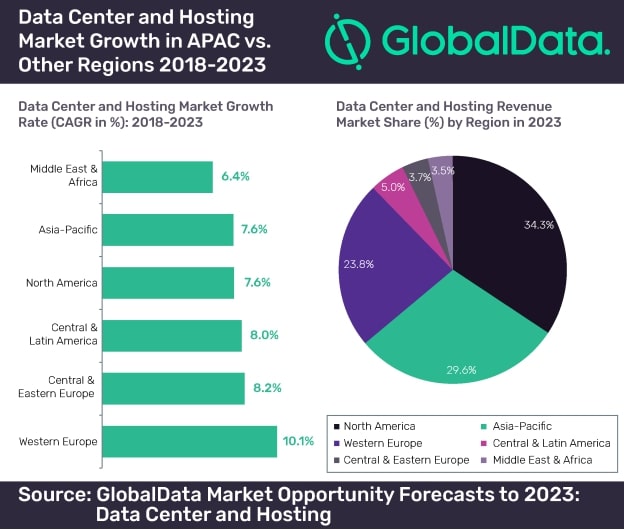Hyderabad: The Asia-Pacific (APAC) region is all set to witness a strong growth in terms of data center and hosting services revenue. The growth is mainly driven by more number of companies expanding to APAC to serve their global client base.
The APAC market is estimated to touch $32 billion by 2023, only second to North America, according to GlobalData‘s latest forecast.
Enterprises are increasingly migrating their existing resources to data centers to reap benefits from data revealed GobalData.
“The data center and hosting market growth in APAC will be driven by growing demand for cloud services and digitization from both enterprises as well as the investors,” said Sunil Kumar Verma, Lead ICT Analyst – GlobalData.
The North America region will be the largest in terms of overall revenue market share with 34.3% in 2023. But APAC will have nearly 30% market share, followed by Western Europe (nearly 24%).

“The APAC region provides the leading vendors with unique benefits in terms of costs, continuous investment in connectivity infrastructure upgrades and capability to serve broader set of customer requirements in their pursuit for digital transformation,” added Verma.
By 2023, China will be the largest market accounting for about 36% of the overall market opportunity in APAC, followed by Japan and Australia with 22% and 8.3% respectively.
China’s data center and hosting market revenue is estimated to reach $11.5 billion in 2023.
Internet companies, along with cloud vendors in China, continue to make significant impact on the increased demand for data center and hosting services. Alibaba, Tencent, Sinnet, China Telecom and China Unicom among the major vendors operating in China.
China, Japan, Australia, India and South Korea will be the five leading revenue generating countries. These countries will account nearly 80% of the overall data center and hosting revenue in APAC. Estimated to be about $32 billion in 2023.
The region is expected to witness increased interest from the leading vendors to leverage the existing opportunity in the region.
Chayora, for instance, opened first of its planned nine data centers in China in early 2019, whereas Alibaba opened its second data center in Japan and Indonesia.
AWS launched Asia Pacific (Hong Kong) data center region in April 2019. Hyperscale data center provider AirTrunk opened its second data center at Sydney in November 2019.
Internet Initiative Japan (IIJ) completed 50MW data center in April 2019, whereas Kyocera and MC Digital Realty have announced plans to build data centers.
Australia’s New South Wales government had pledged $100 million in February 2019 to build regional data centers to enhance internet connectivity. It is a part of NSW government’s $400 million regional digital connectivity package.
In India, Oracle opened cloud data center in October 2019, as a part of its plan to build 20 data centers globally. Leading telcos in India such as Reliance Jio and Airtel too have announced plans to open data centers in the country.
In South Korea, Equinix and Oracle have opened data centers, whereas Digital reality and Samsung too have announced plans to build data centers in the country.
The Connected ecosystem growth, according to Verma is pushed by increasing in Internet of Things (IoT) penetration and 5G launch in this region.
“Adoption of new technologies like artificial intelligence (AI) and virtual reality (VR) will foster increased data storage and processing capabilities demand, resulting in increased construction and developments related to the data centers and hosting in the region,” said Verma.
In terms of investment, the APAC region will see good investment in new data center projects along with new entrants.
“Investment will continue in new data center projects by existing and new entrants with a view to expand their presence in the region and serve additional customers. Additionally, with the commercial availability of 5G services in the next 1-2 years, data consumption is expected to grow multiple-folds,” expected Verma.
“This will result in constant connectivity requirements as well as data center supported features, for supporting the critical business applications and activities of the enterprises,” concluded Verma.


